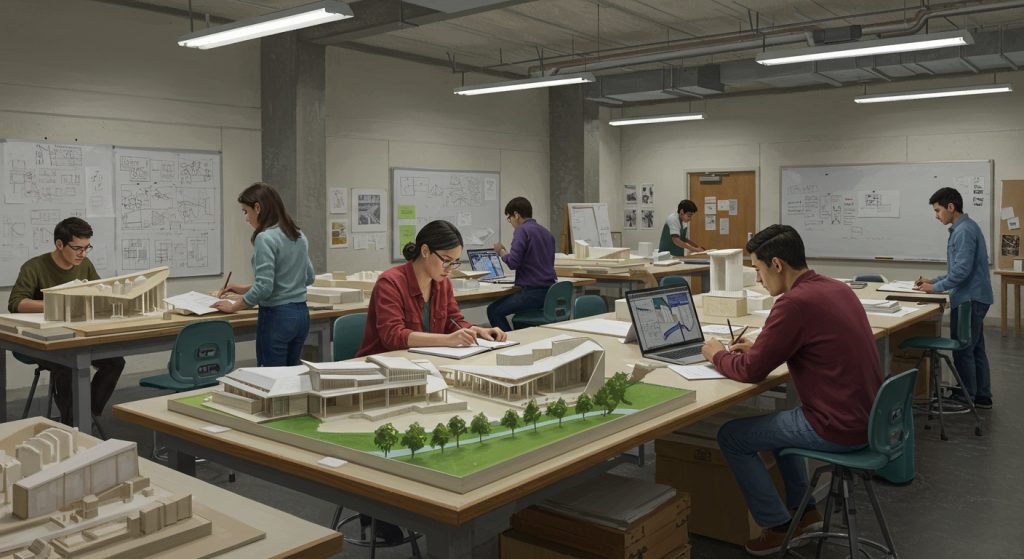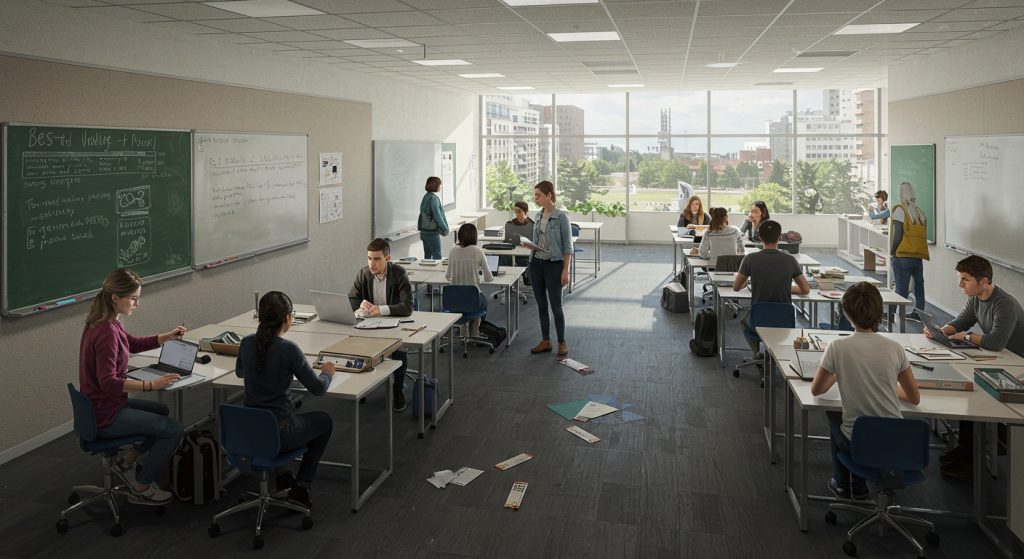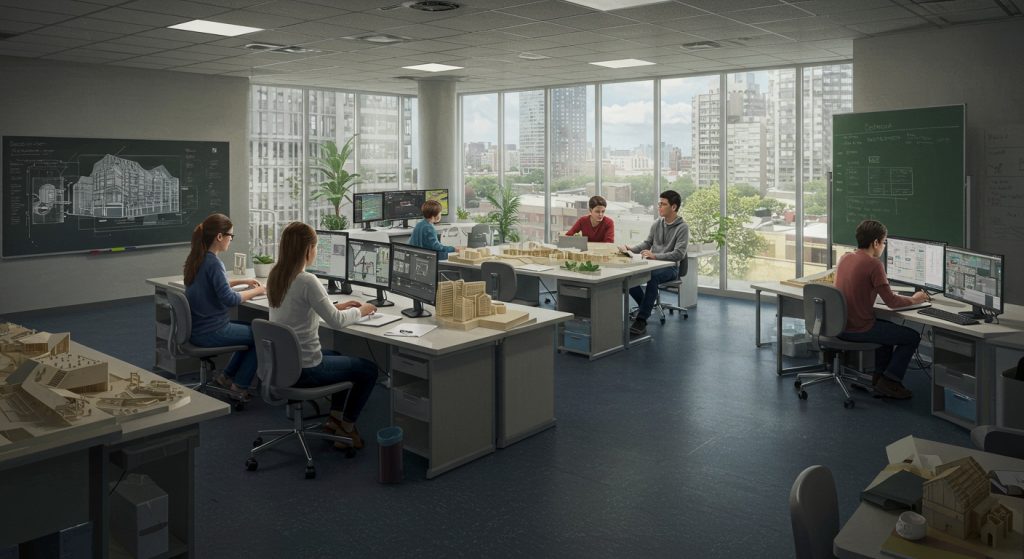Introduction
The field of architecture stands at a fascinating crossroads, constantly evolving with new technologies and design philosophies while simultaneously drawing inspiration from historical precedents. Navigating the complexities of this dynamic landscape requires a robust educational foundation, one that fosters both creative exploration and a deep understanding of architectural heritage.
For aspiring architects, selecting the right program is paramount. Many institutions strive to balance these seemingly opposing forces, emphasizing innovative design thinking alongside a rigorous grounding in traditional building techniques and architectural history. Therefore, prospective students often face the challenge of identifying programs that truly excel in both domains.
This blog explores the top architecture programs around the world that successfully blend innovation and tradition. We will delve into the curricula, faculty expertise, and unique learning environments that distinguish these institutions. Moreover, this analysis provides valuable insights for students seeking an education that prepares them to shape the future of the built environment while respecting its rich past.
Top Architecture Programs Blending Innovation and Tradition
Choosing the right architecture program is a big deal, right? You want a place that not only respects the history and principles of architecture, but also pushes the boundaries and prepares you for the future. It’s a delicate balance, blending the old with the new. So, how do you find those programs that really nail it? Well, let’s dive in!
Why the Blend Matters
Honestly, an architecture program focused only on tradition might leave you feeling a bit… stuck in the past. Conversely, a program that’s all about the cutting edge might not give you the solid foundation you need. The best programs recognize that understanding architectural history informs future design, and technological advancements enable bolder, more sustainable, and frankly, more interesting creations. Furthermore, understanding the needs of the present, such as sustainable designs, allows students to address modern problems effectively. Finding schools that embrace this balance is key.
Key Elements to Look For
So, what are the tell-tale signs of a top-notch architecture program that skillfully blends innovation and tradition? It’s more than just lip service; it’s about the curriculum, the faculty, and the overall learning environment.
- A Curriculum Rooted in History, Open to the Future: Look for courses that explore architectural history and theory, but also incorporate digital design, parametric modeling, and sustainable design principles.
- Faculty with Diverse Expertise: Are the professors seasoned architects with years of practical experience and researchers pushing the envelope in new technologies? That’s a good sign.
- Emphasis on Critical Thinking and Problem-Solving: Architecture isn’t just about drawing pretty pictures; it’s about solving real-world problems creatively.
- Opportunities for Hands-On Experience: Internships, studio projects, and community engagement opportunities are essential for applying what you learn.
Spotlight on Innovative Approaches
Beyond the basics, some programs are really standing out for their innovative approaches. For instance, some are incorporating virtual reality and augmented reality into the design process, allowing students to visualize and experience their designs in a whole new way. Moreover, there’s a growing emphasis on sustainable design, with programs teaching students how to design buildings that minimize their environmental impact. And, actually, these are important things. I think.
Also, keep an eye out for programs that encourage interdisciplinary collaboration. Architecture doesn’t exist in a vacuum; it intersects with engineering, urban planning, landscape architecture, and many other fields. Programs that foster collaboration across disciplines offer a more holistic and realistic learning experience. As a result, students can learn to work in diverse teams, which is essential for success in the real world. Decoding the Best Computer Science Programs Globally, which is kind of related because you’ll also need some good software to design buildings.
Assessing the “Fit”
Ultimately, the “best” architecture program is the one that’s the best fit for you. Consider your own interests, learning style, and career goals. Do you thrive in a highly structured environment, or do you prefer a more flexible and experimental approach? Do you want to specialize in a particular area of architecture, such as sustainable design or urban planning? Visiting campuses, talking to current students, and attending open houses can provide valuable insights.
In Conclusion (Just Kidding! This is the main section, not a blog post.)
Finding the perfect architecture program is a journey. By looking for programs that genuinely blend innovation and tradition, you’ll be well on your way to building a successful and fulfilling career in architecture. Happy searching!
Conclusion
So, what’s the big takeaway? Picking the right architecture program, one that actually balances innovation with the tried-and-true methods, well, it’s a pretty big deal. It’s not just about getting a degree; it’s really about shaping your future, your design philosophy, and basically, how you’ll contribute to the built world.
Ultimately, the programs we’ve highlighted offer something special: a chance to stand on the shoulders of giants and to forge your own path. For those seriously considering architecture, take the time to really dig into what each program offers beyond rankings. And remember, it’s about finding the right fit for you, your vision, and how you want to leave your mark. Check out Decoding the Best Computer Science Programs Globally for other interesting articles. Good luck, future architects; hope this helped!
FAQs
Okay, so I’m looking at architecture programs… what does ‘blending innovation and tradition’ actually mean in this context?
Good question! Basically, it means the program isn’t just stuck in the past, teaching only classical design. Nor are they only focused on the latest tech and trends. Instead, they strike a balance. You’ll learn the fundamental principles of design, construction, and history (the ‘tradition’ part), but also how to apply those principles using modern technologies and consider contemporary design challenges (the ‘innovation’ part).
What are some examples of ‘traditional’ skills I’d still need to learn, even at a forward-thinking architecture school?
Think about things like hand drafting, sketching, understanding architectural history and theory, and grasping the basics of structural systems. These are the building blocks – pun intended! – that let you understand why certain design choices work (or don’t), and give you a solid foundation to build upon when you’re experimenting with new ideas.
And what kind of ‘innovative’ stuff are we talking about, specifically?
That could be anything from using BIM (Building Information Modeling) software, exploring sustainable design practices, experimenting with parametric design, learning about digital fabrication techniques like 3D printing, or even delving into the social and ethical responsibilities of architects in the 21st century.
How can I tell if a program really balances both, or if it’s leaning too heavily in one direction?
That’s the tricky part! Look closely at the curriculum. Does it have a solid foundation in history and theory alongside the tech classes? Check out student work – does it show an understanding of both traditional design principles and innovative solutions? And don’t forget to read faculty bios – are they experts in both classical and contemporary architecture?
Is it more important to focus on the ‘innovation’ aspect, since the field is always changing?
Not necessarily! While staying current is crucial, a strong grounding in tradition provides context and allows you to critically evaluate new technologies and design approaches. You need to understand the ‘why’ behind the ‘what’ to truly be innovative. It’s like knowing the rules before you break them… intentionally, of course!
What kind of career paths are opened up by attending a program that blends innovation and tradition effectively?
Pretty much any career path in architecture! You’ll be well-prepared for traditional roles in architectural firms, but also for more specialized areas like sustainable design, urban planning, research, or even working with cutting-edge construction technologies. The key is flexibility and adaptability, which these programs foster.
Okay, last one! Any specific keywords I should be looking for when researching programs?
Definitely keep an eye out for terms like ‘sustainable design,’ ‘digital fabrication,’ ‘BIM,’ ‘parametric design,’ ‘contemporary theory,’ ‘historic preservation,’ and ‘integrated design.’ These terms often indicate a program’s commitment to both innovation and tradition.



